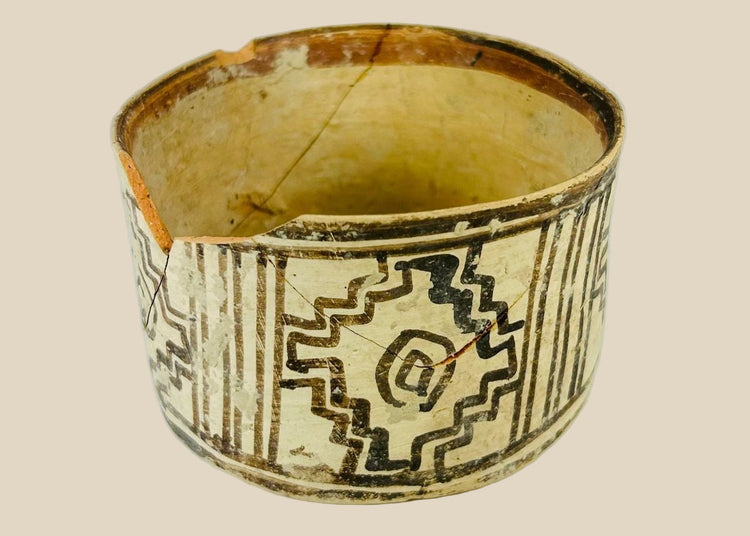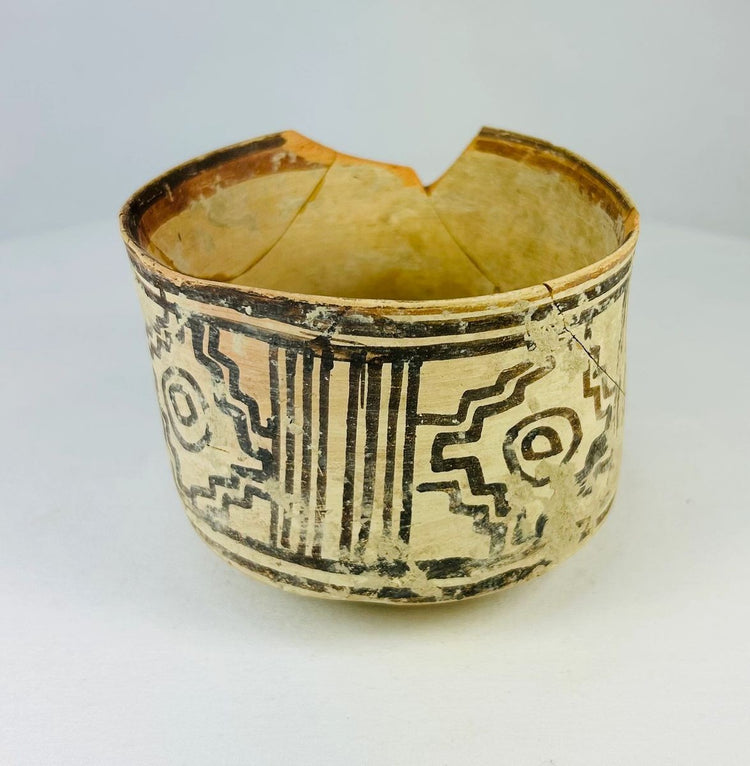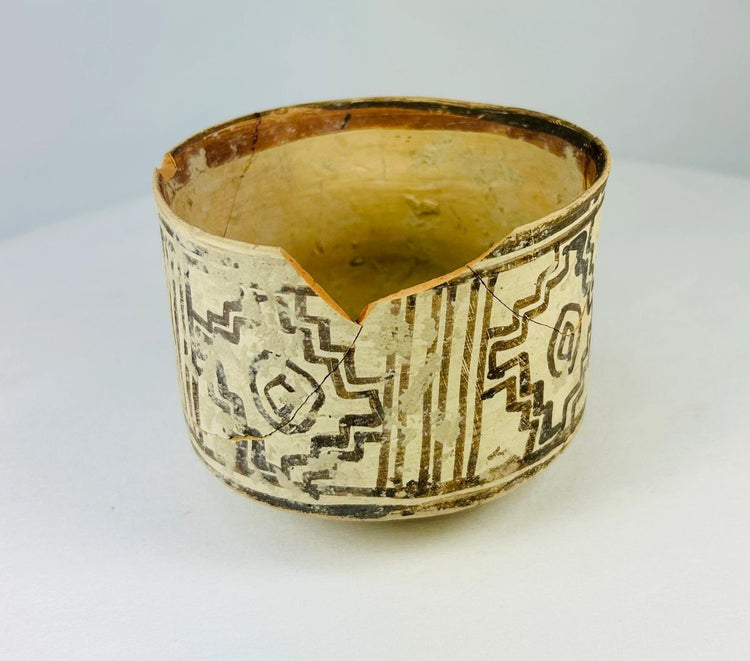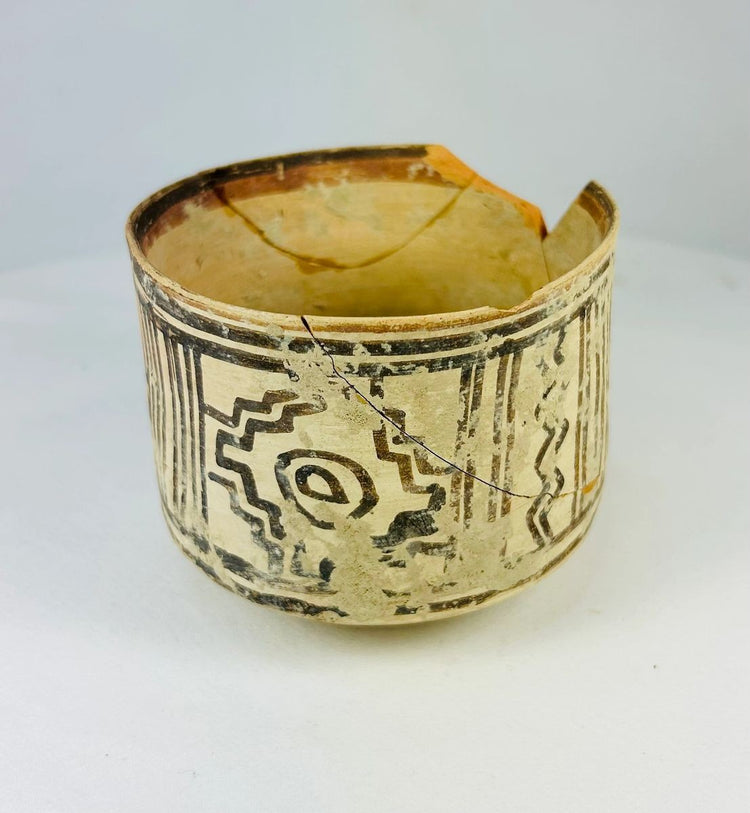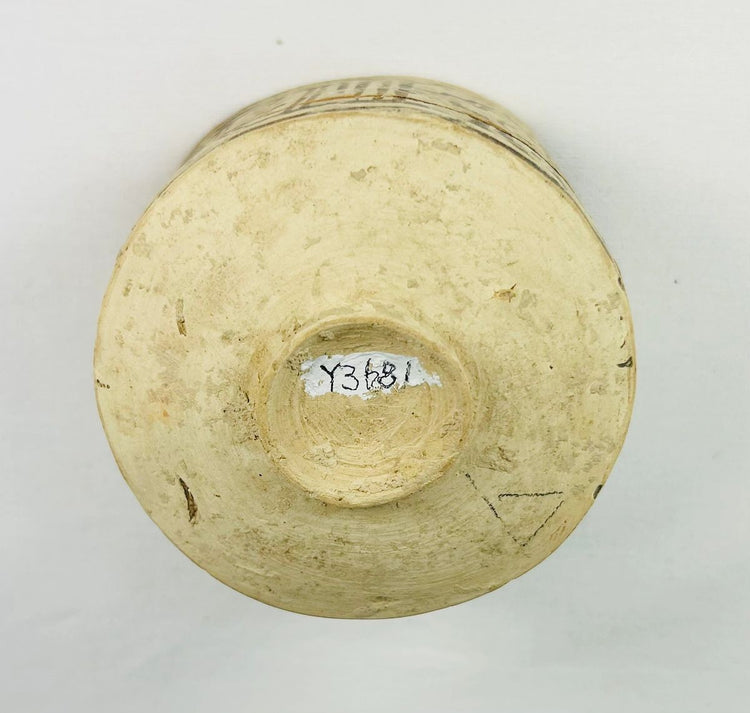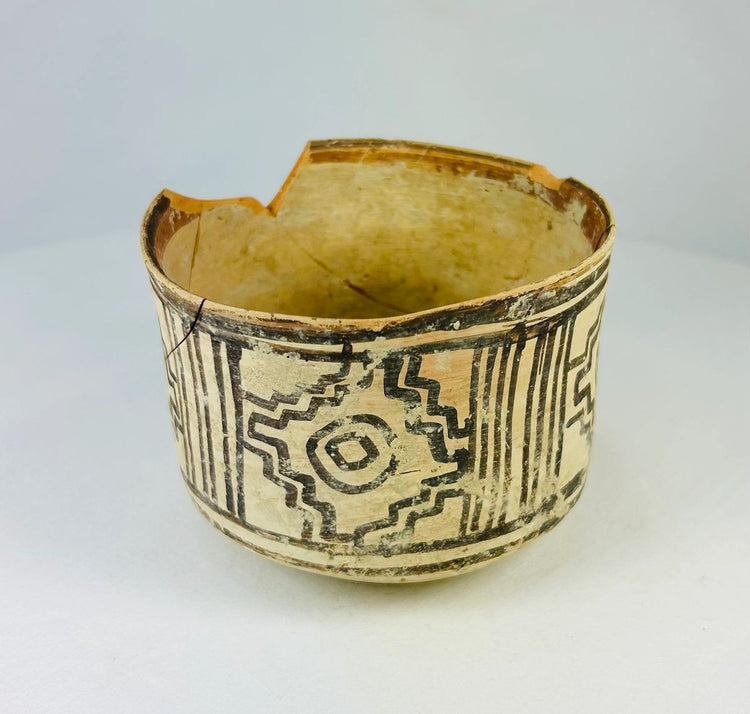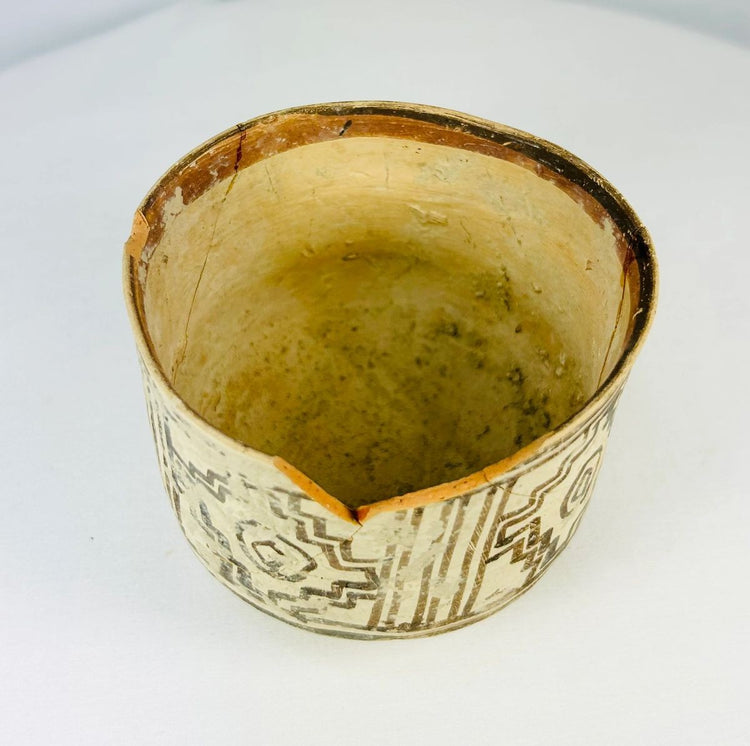Indus Valley | Painted Pottery Vessel | Circa 3rd Millennium BCE
Description
More
Less
Historical Context & Origin
Region: Indus Valley (modern-day Pakistan and northwest India)
Material: Hand-crafted pottery with painted decoration
Period: Circa 3rd Millennium BCE, Harappan Civilization
Description
This rare pottery vessel dates back over 4,000 years to the Indus Valley Civilization, one of the world’s earliest and most sophisticated urban societies. The cylindrical form, painted with intricate geometric and symbolic designs in black against a cream surface, reflects the Harappan people’s refined sense of balance, order, and symbolism. Such vessels were often employed in daily domestic life, but their decorative motifs also suggest ritual or ceremonial use, linking this utilitarian object to the spiritual practices of early urban culture.
Features
- Cylindrical vessel with simple yet elegant proportions
- Hand-painted geometric and symbolic patterns in black pigment
- Cream-colored surface with age-darkened patina
- Indicative of both functional storage and ritual use within Harappan society
Cultural Significance
Pottery such as this was essential to daily life in the Indus Valley, serving as containers for grains, oils, or liquids. The presence of painted decoration, however, elevates its function beyond the domestic sphere, suggesting ceremonial importance—perhaps linked to offerings, burials, or religious observances. The balanced geometric designs embody the aesthetic ideals of one of humanity’s first great urban civilizations, providing rare insight into their worldview and symbolic traditions.
Condition
The vessel survives with much of its painted decoration intact. Natural weathering, minor surface losses, and evidence of careful restoration confirm both its antiquity and the effort taken to preserve it. These age-related imperfections enhance its character and testify to its long survival across millennia.
Dimensions (approximate)
Height: approx. 4 in
Diameter: approx. 4 in
Age
Circa 3rd Millennium BCE
Learn More
Unlock the Secrets of the Indus Valley Civilization
Discover More Remarkable Indus Valley Artifacts in our Collection
Description
Historical Context & Origin
Region: Indus Valley (modern-day Pakistan and northwest India)
Material: Hand-crafted pottery with painted decoration
Period: Circa 3rd Millennium BCE, Harappan Civilization
Description
This rare pottery vessel dates back over 4,000 years to the Indus Valley Civilization, one of the world’s earliest and most sophisticated urban societies. The cylindrical form, painted with intricate geometric and symbolic designs in black against a cream surface, reflects the Harappan people’s refined sense of balance, order, and symbolism. Such vessels were often employed in daily domestic life, but their decorative motifs also suggest ritual or ceremonial use, linking this utilitarian object to the spiritual practices of early urban culture.
Features
- Cylindrical vessel with simple yet elegant proportions
- Hand-painted geometric and symbolic patterns in black pigment
- Cream-colored surface with age-darkened patina
- Indicative of both functional storage and ritual use within Harappan society
Cultural Significance
Pottery such as this was essential to daily life in the Indus Valley, serving as containers for grains, oils, or liquids. The presence of painted decoration, however, elevates its function beyond the domestic sphere, suggesting ceremonial importance—perhaps linked to offerings, burials, or religious observances. The balanced geometric designs embody the aesthetic ideals of one of humanity’s first great urban civilizations, providing rare insight into their worldview and symbolic traditions.
Condition
The vessel survives with much of its painted decoration intact. Natural weathering, minor surface losses, and evidence of careful restoration confirm both its antiquity and the effort taken to preserve it. These age-related imperfections enhance its character and testify to its long survival across millennia.
Dimensions (approximate)
Height: approx. 4 in
Diameter: approx. 4 in
Age
Circa 3rd Millennium BCE
Learn More
Unlock the Secrets of the Indus Valley Civilization
Discover More Remarkable Indus Valley Artifacts in our Collection
You May Also Like




















